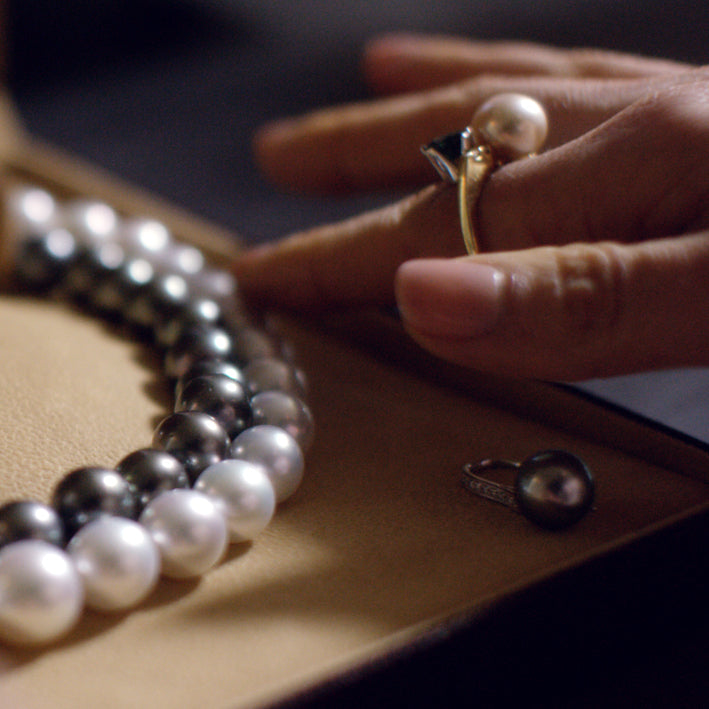
Classic pearls are formed in the Akoya oyster, or pinctada fucata martensii to its friends, pearls from these oysters were first recorded in 1727 when Kaempfer noted that fine [i.e. natural] pearls were found in Japan within Akoya oysters, Kaempfer also noted that the quality in these Japanese pearls was similar to the best natural pearls which at the time came from the Persian Gulf.
Akoya pearl size – It DOES matter
 Akoya Pearl Necklace with Diamond Leaf Centrepiece and a Large South Sea Pearl Pendant
Akoya Pearl Necklace with Diamond Leaf Centrepiece and a Large South Sea Pearl Pendant
The classic akoya pearls range in size from 3mm to 10mm and on occasions can be 10.5mm in diameter or larger, but this is rare as the oyster is normally only 6cm in diameter, hence growing a lustrous orb bigger than 1/6 of its size is exceptional.
How much should an akoya pearl cost?
The most commercially attractive Akoya pearl size is 7 - 7.5mm. This is because each Akoya pearl represents the life’s work of one oyster, the smaller the pearls are, the more successful cultured oyster pearls are needed to make up a necklace. Once we go over the 7 - 7.5mm Akoya pearl size we see that size really DOES matter, as a general rule every ½ mm the pearl grows, doubles its price, until we get to the very rare 10.5mm pearls which are the exception and as such command a premium price.
 Multistrand Akoya Pearl Necklace with Aquamarine
Multistrand Akoya Pearl Necklace with Aquamarine
How is a cultured Akoya pearl formed?
Nowadays a technician implants a spherical resin bead into the pearl bearing oyster alongside an epithelial cell graft that has come from the mantle tissue of a donor oyster. The graft forms a pearl sac around the resin implant. Within the pearl sac layers of nacre are secreted to cover the nucleus. Akoya pearl bearing oysters must be three years old before they are able to host a pearl successfully and their life expectancy in a farm is seven years, in the wild they can survive for over 40 years.
Follow us on Instagram, Facebookand Twitter for more inspiration.



















